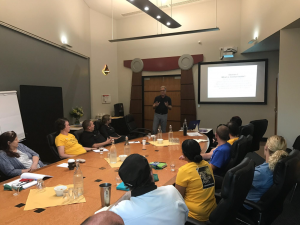Bullying in the workplace has received a lot of media attention lately. We hear a lot of stories about employees reporting they have been bullied or harassed at work. But, do you know the difference between reasonable management action, and workplace bullying? Would you know what to do if an employee reports that they are being bullied by a co-worker or a manager? At the end of the day it is the employer who has a duty of care to provide a safe workplace under Work Health and Safety (WHS) laws. That’s why employers need to respond quickly and appropriately to allegations of bullying in the workplace.
Like other workplace health and safety risks, bullying can have many negative effects on the success of a business, including, excessive sick leave, reduced productivity of employees, excessive staff turnover and low morale. Unchecked it can lead to orders from the Fair Work Commission (FWC), workers compensation claims and costly legal bills. Employers need to prepare for dealing with these situations.
It is important to recognise that reasonable management action is not bullying. Performance management; disciplinary action for misconduct; informing a worker about unsatisfactory work performance or inappropriate behaviour; directing a worker to perform duties in keeping with their job; or maintaining reasonable workplace standards are not examples of bullying, yet sometimes managers are fearful these actions could be interpreted as bullying.
Examples of bullying can include aggressive or intimidating conduct; belittling or humiliating comments; spreading malicious rumours; teasing practical jokes or ‘initiation ceremonies’; exclusion from work related events; unreasonable work expectations; displaying offensive material; and pressure to behave in an inappropriate manner. However, these behaviours must be repeated and unreasonable and must create a risk to health and safety in order for it to be bullying. In addition to this bullying can occur outside of the workplace and work hours. In a recent case before the FWC it was found that ‘defriending’ and ‘commenting’ on Facebook contributed to the bullying in that case.
Ignoring complaints about bullying will only let potential workplace grievances fester and potentially get out of hand. The best response is to prevent workplace bullying happening in the first place. If bullying still occurs then dealing with issues quickly and directly will have the best outcome for your workplace. To do this you need to have good policies and procedures in place before and incident occurs. In a recent case before the FWC, last minute implementation of an anti-bullying policy was not enough to stop the FWC from issuing orders against the employer.
Ultimately, policies on how to treat people in the workplace and good internal grievance procedures have to be actively implemented by good line managers. Good line managers are the key to tackling workplace bulling. Employers need to give managers the best training, policies and procedures, and also the authority to resolve people management issues.
Lighthouse Safety recommends updating your policies and procedures for managing bullying, and also putting your staff through bullying awareness training. Give me a call on 0422 669 631 to discuss some options.
Cheers Pat
Managing Director
Lighthouse Safety





